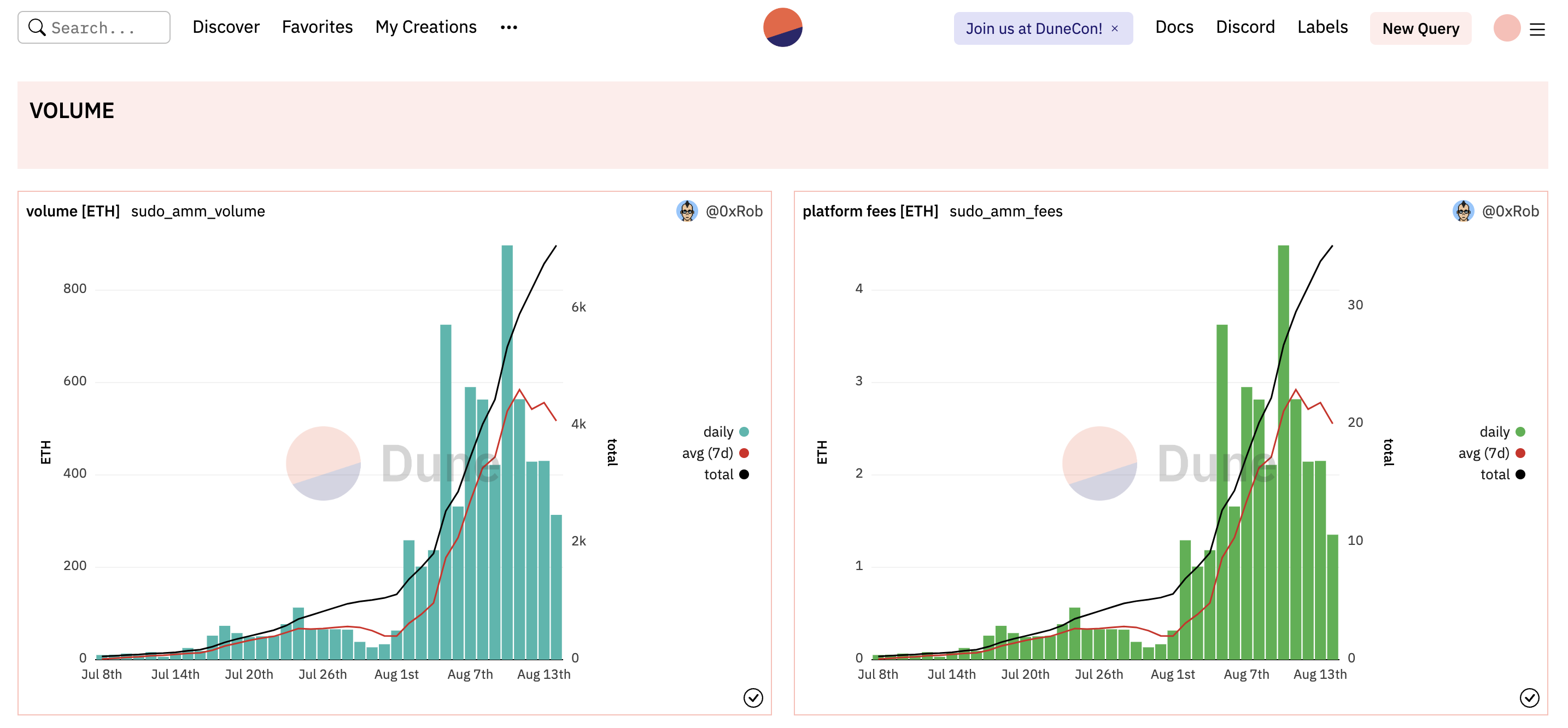"How can we build a thriving DeFi x NFT community?"
This is a million-dollar question and there’re only a few projects that’ve done better than sudoswap.

Here are 5 tactics you can learn from them and use it to boost your community engagement 👇
Before jumping on to the main topic, what’s sudoswap?
They’re building a cool NFT trading tool (AMM) and it’s growing rapidly. For more info, these links are helpful.
Now on to community building..
1. Set a lofty goal
In the interview with DCF God, the project creator @0xmons (or owen) stated that
“I think the end of this year (2022), I would be really excited if we're doing something like 10-50% of NFT trading volume.”
The point is NOT over-promising, but getting your community engaged and united towards one ambitious goal.
Having a boring goal (or community mission) often leads you to nothing.
This is why folks like Elon Musk set insanely high targets internally and externally.
2. Make your community onboarding experience as personal as possible
The chances are that your next community member has joined hundreds of other Discord servers already.
So making the onboarding experience unique is VERY critical (otherwise they will just leave).
It doesn’t mean you need to prepare a 10-page presentation or well-documented film, though.
This is what you’ll see when you join Sudoswap’s Discord server. Very simple. But unique. And personal.


What's the key takeaway here?
Showing that you care about new members boosts initial conversion from joining to engaging.
And @0xmons actually replies to a bunch of questions and comments on Discord. So proving the engagement by actually doing is also important.
3. Be Transparent
Transparency is not optional for crypto communities - it’s a must-have.
Sudoswap shares their codebase (excl. frontend) .
And they openly post audit results here .
This level of transparency is appreciated by many (especially if the project is run by anon).
It also helps other developers and researchers to build on top of its platform.
For instance, @rob_0x created this amazing dashboard on Dune.

4. Provide tools for your community to interact with
Sudoswap offers an LP pool that NFT collections can create and help their owners swap NFTs instantly.
For example, a popular NFT community Lobster DAO created their own pools: LOBS <> ETH.
Don’t have the tech skill to build a smart contract? No worries. There are many ways to engage communities without being a dev.
Giving away copyrighted creatives and letting your community do merch / create content is a good example.
What you need is not tech. It’s a way to channel community energy into sharable work.
Once your community is equipped with the right tools, they’ll be more active and engaged.
Look at this video by @gabrielhaines. This is a community builder's dream.

5. Communicate with real progress
Last but not least - give meaningful updates to your community, constantly.
There are too many projects trying to ring notification bells without making any progress.
Posting a tweet is not a progress. People will mute your channel.

Sudoswap has constantly shipped new features and product enhancements.
It increases community engagement and retention.
Even if your project has no software to update on - you can do it through partnerships, events and other campaigns.
Summary
TLDR: what we can learn from @sudoswap's community building
- Set a lofty goal
- Make your community onboarding experience as personal as possible
- Be Transparent
- Provide tools for your community to interact with.
- Communicate with real progress
Hope it helps!
Also let us know if there are any other communities we should check out. Would love to do more of these.








